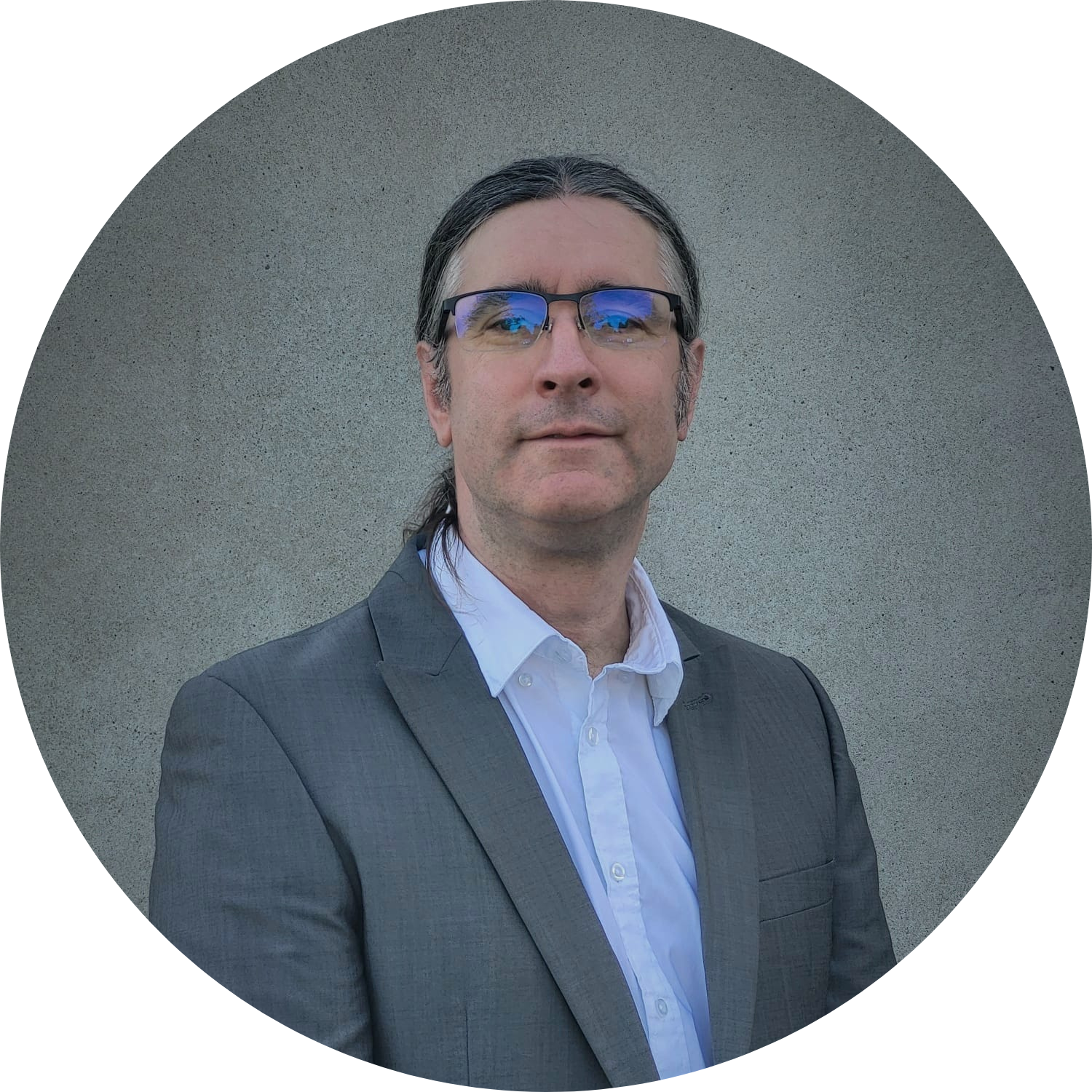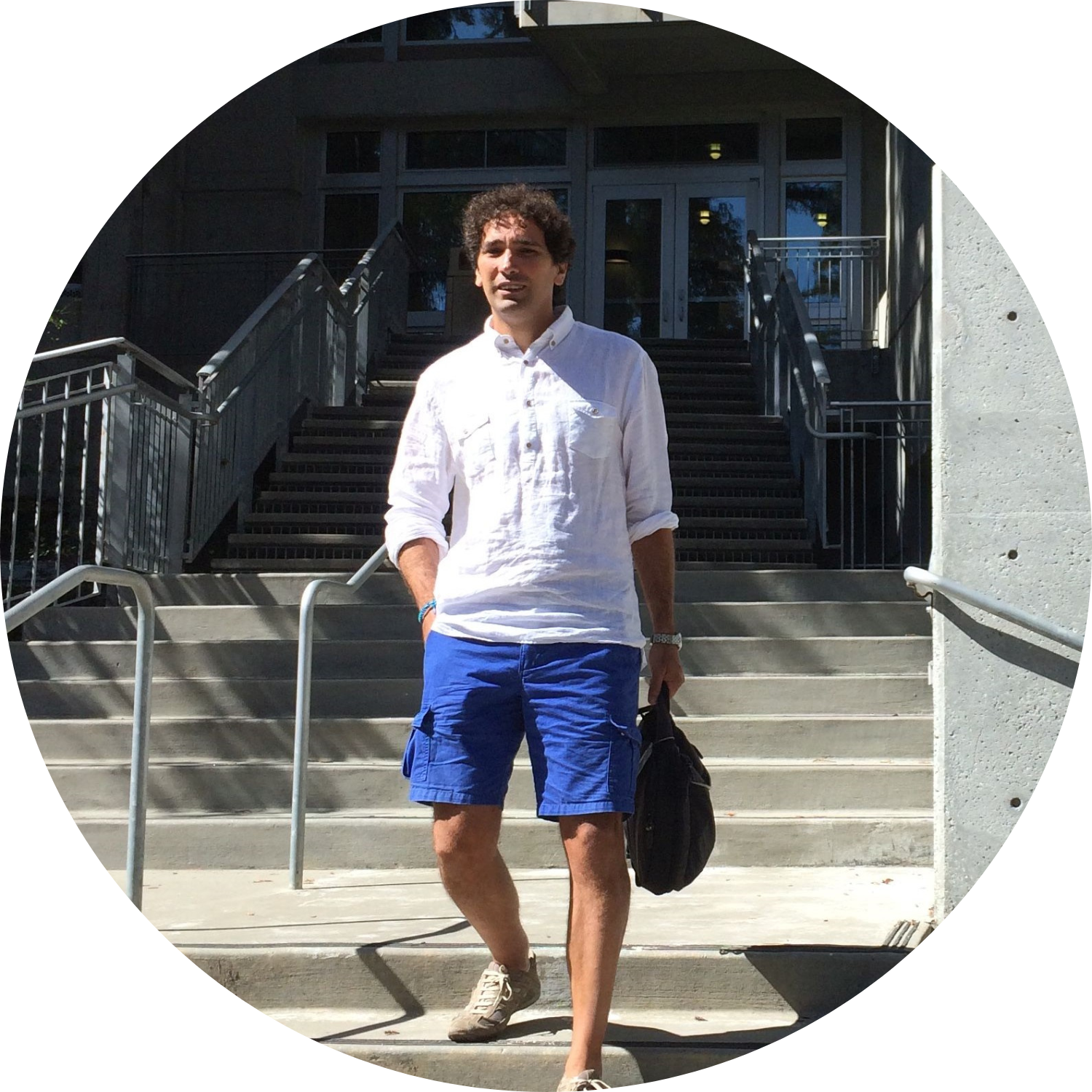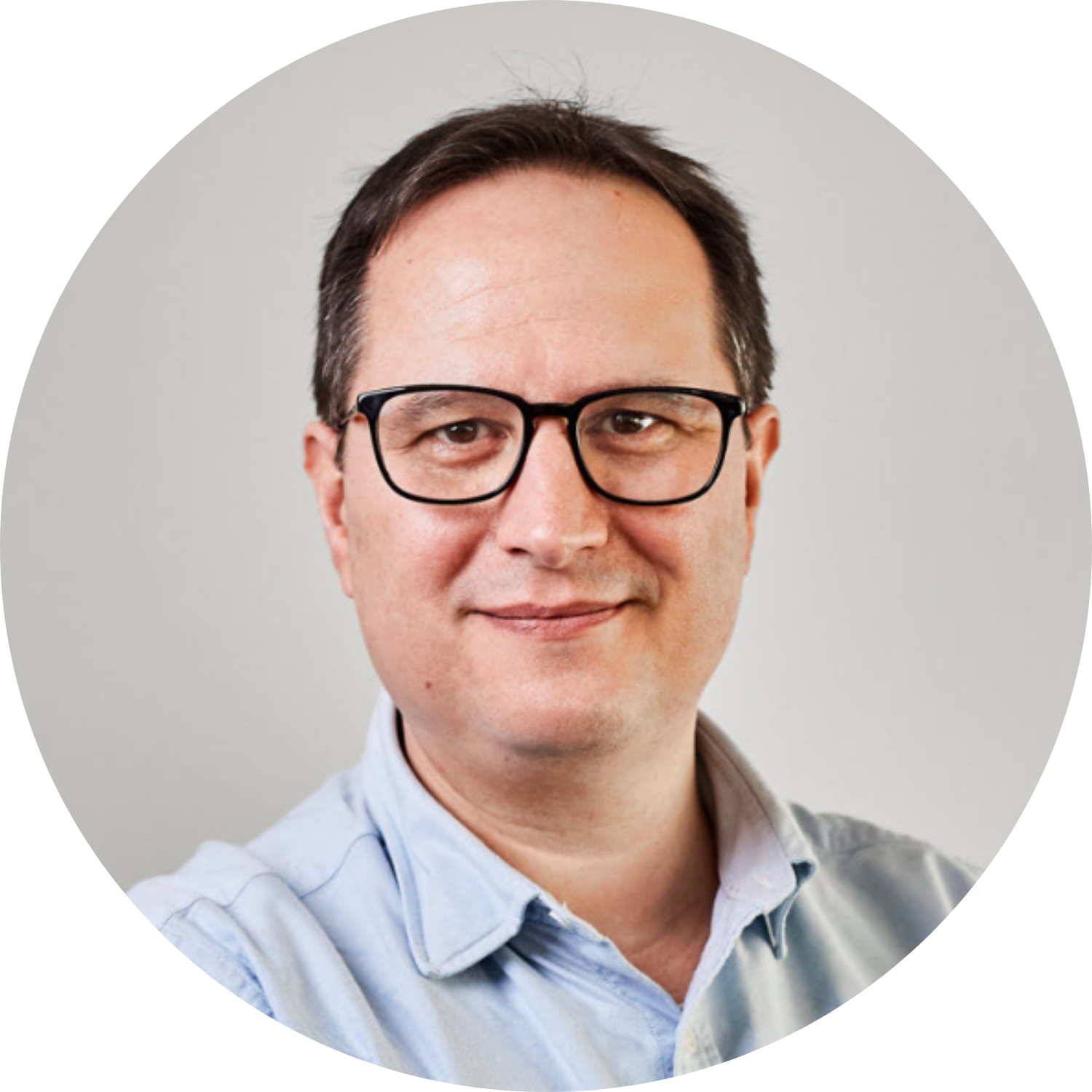Andrea Gonzalez-Montoro

Andrea Gonzalez-Montoro, phD in Physics, born in Valencia (Spain) in 1992. During her 9-year academic career, she has been mostly working on the study and improvement of the instrumentation associated to Positron Emission Tomography (PET) detector blocks. She has contributed to various well recognized items in the imaging research area, but especially in PET detector development and their assembling into fully-operating systems.
From 2014 to February 2019, she was master and then, phD candidate at the Institute for Instrumentation in Molecular Imaging (i3M) where she was involved in building PET prototypes in both the pre-clinical small animal field and the clinical site (Brain, breast and Prostate dedicated scanners). The developed devices have been successfully transferred to the industry such as the small animal PET Albira, currently distributed by Bruker, or the dedicated brain PET commercialized by Oncovision. She got my phD diploma in Physics in December 2018 with Cum Laude and international disctintion.
In March 2019, she joined the Molecular Imaging Program at Stanford University as a Postdoctoral Research Fellow. At Stanford, her research focused on the design and implementation of high efficiency TOF-PET detector blocks. In particular, she was involved in the design of a brain dedicated PET scanner and a whole-body PET/CT. As an additional research, she researched the use of Cherenkov radiation to enhance the temporal resolution of PET scanners based on BGO crystals.
In April 2022, she joined back the i3M group as a postdoctoral fellow and in January 2023 she got a Ramón y Cajal postdoctoral position at the Spanish Research council (CSIC).
She is currently involved in the development of novel edgeless PET inserts and also on the design and characterization of a detector block for a total-body PET scanner (IMAS) that will make a qualitative leap in the sensitivity of PET scanners.
John Murphy
.png)
John Murphy joined Broadcom’s Industrial Fiber Products Division (IFPD) in late 2022 with a long history in Physics, Photonics, Sales and Business Development. Having completed a Bachelor's Degree in Applied Physics (1999), John completed his Ph.D (UV-Vis Spectroscopy) in 2004 at the Cork Institute of Technology in Ireland where he also worked as a lecturer before taking a post-doctoral position at the Funcaion CEAM in Valencia, Spain with a focus on UV/Vis spectroscopy (in study of volcanic SO2 emissions). John joined Sensl Technologies in 2006 initially as an Applications Engineer and later ran all Business Development & Sales activities for Sensl, helping the company through its acquisition by ON Semiconductor in 2018. John has spent almost 15 years in the world of SiPM & SPAD sensors (especially in radiation an nuclear medicine fields) and has worked closely with customers in industrial, consumer, medical, scientific (HEP) and automotive LiDAR markets. He is now a Business Development Manager at Broadcom, managing a network of channels helping to promote the full range of IFPD optical sensors globally.
Giulio Pellegrini
.png)
Dr. Giulio Pellegrini (BSc. Physics from University of Napoli (IT) 1999 and PhD in Electrical and Electronic Engineering from the University of Glasgow (UK) 2003) is a worldwide expert in the field of advanced radiation hard silicon detectors (ORCID: 0000-0002-1606-3546). Since 2022, he has been the head of the Radiation Detector Group at IMB-CNM-CSIC in Barcelona Spain.
Since May 2012, he has been the coordinator of the research line: “New Detector Structures”, within the RD50 CERN collaboration that includes more than 60 institutes and 270 partners worldwide.
During 2021 and 2022, he was the convenor of the Detector Roadmap panel in solid state detectors to assist the ECFA (The European Committee for Future Accelerators) to organize the detector R&D efforts in Europe. Currently, he is also coordinating the creation of a new international collaboration at CERN, called DRD3, which will include researchers from 100 institutions from all around the world.
Dr. Pellegrini is coordinating a European project (For2ensic GA No. 101075672) to develop disruptive Silicon Carbide (SiC) based devices with Ultra- High Voltage (UHV) capability adapted to the novel challenges of energy grid distribution. The project includes 8 partners and has been financed with 5.5M€. In the past 5 years, he was Principal Investigator of 3 European projects AIDA2020 of the program H2020-INFRAIA, the AidaInnova of the EU Horizon 2020 program and the European UHDpulse project of the EMPIR programme.
Since 2018 and in collaboration with Princeton Plasma Physics Laboratory (PPPL), he is exploring the use of ultra radiation and temperature -resistant semiconductor sensors in nuclear fusion reactors. This work has been carried out in the framework of the RETO-Collaboration project "Radiation detector on silicon carbide for harsh environments" that he has coordinated.
He has created a spin-off company Alibava Systems in 2011 and licensed 4 patents to different companies.
Vadim Veshchezerov
.png)
Vadim Veshchezerov, a prominent entrepreneur in the high-tech industry, has been at the forefront of efforts to advance the commercialization of highly resistive gallium arsenide (HR:GaAs:Cr) for radiation detectors and related devices. With a solid academic foundation and extensive experience, Veshchezerov has played a pivotal role in pioneering initiatives that leverage the potential of HR:GaAs:Cr as a widely accessible material.
Veshchezerov's career began with a master's degree in applied physics from the esteemed Moscow Institute of Physics and Technology in 1984. He subsequently embarked on a successful research career at the USSR Academy of Sciences. Building on his research experience, Veshchezerov transitioned into the high-tech business sector, and created some successful startups. In 2011 he assuming the position of Investment Director at Rusnano, a prominent Russian venture capital fund. Over the course of approximately nine years, Veshchezerov focused on identifying and introducing cutting-edge scientific advancements to the market, with a particular emphasis on investing in promising high-tech start-ups.
In 2022, driven by his passion for GaAs physics, Veshchezerov co-founded Zeelta Oy in Helsinki. Zeelta Oy is a pioneering company that aims to revolutionize the availability and accessibility of HR:GaAs:Cr. Drawing on the research outcomes of Professor Oleg Tolbanov's group, Zeelta Oy is dedicated to creating advanced radiation sensors by harnessing the unique properties of HR:GaAs:Cr. Under Veshchezerov's leadership, Zeelta Oy strives to bridge the gap between scientific exploration and commercialization, opening up new possibilities in radiation devises.
Additionally, in collaboration with colleagues from the Institute of Nuclear Physics of the Academy of Sciences of the Republic of Uzbekistan, Veshchezerov co-founded Tasgard in Tashkent in 2022. Tasgard focuses on the development and production of state-of-the-art scientific instruments that utilize HR:GaAsCr detectors. By combining their expertise and resources, the team at Tasgard aims to propel scientific research forward by providing researchers with cutting-edge tools and technologies.
Through his ventures, Zeelta Oy and Tasgard, Vadim Veshchezerov is dedicated to unlocking the full potential of HR:GaAs:Cr and shaping the future of scientific exploration in radiation physics and X-ray industry
Adrià Bofill
.png)
Adrià Bofill Petit is the the CTO and co-founder of IMASENIC, a company that designs and supplies custom CMOS image sensors, ROICs and sensor read-out electronic systems for worldwide customers in the industrial, medical, scientific and space markets. He received the degree of Enginyer de Telecomuniació (Electrònica) from Universitat Politècnica de Catalunya (UPC), Barcelona, in 1998. He received in 1999 a Diplôme d'études approfondies (D.E.A) in Microelectronics from Université Joseph Fourier, Grenoble, France. He received a Ph.D. from the University of Edinburgh, Scoltand, in 2005. He started his industrial career as an analog/mixed-signal IC design engineer at Cadence and Analog Devices. He then joined Gigle Semiconductors, a startup designing communications ICs, which was later acquired by Broadcom. There, he worked as an Engineering Manager and lead an analog/mixed-signal IC design team based in Barcelona. At IMASENIC, he is part of the company management team and oversees the engineering department, including analog and digital IC design, hardware and FPGA development.
Rita Pinho
.png)
Rita Pinho is a biomedical engineer passionate about innovation, public policy and scientific outreach. After completing her master’s degree at the University of Porto (PT), Rita decided to pursue a PhD in Tissue Engineering and Regenerative Medicine at UCL (UK). Rita's multidisciplinary approach to knowledge integration equips her with a comprehensive understanding of technological development challenges.
Throughout her academic journey, Rita has actively sought opportunities to bridge the gap between academia, policy, and industry. During her time in Brussels, she worked at the European Commission, bridging the gap between scientific evidence and the policy community. This role allowed her to gain valuable insights into the dynamics of science-
policy interactions and the importance of effective knowledge transfer.
Her passion for stakeholder engagement and participatory decision-making processes has been instrumental in fostering collaboration and ensuring that diverse perspectives are included in scientific endeavours. Beyond her academic pursuits, Rita is deeply committed to making science and health more accessible and collaborative. She advocates for science-driven approaches to address societal challenges and promote sustainable development.
Rita co-founded an innovation network of more than 90 partners that aims to fast-track innovation in materials and manufacturing in healthcare. Her professional journey has led her to CERN, where she is a part of the Knowledge Transfer Group. In this capacity, she actively identifies opportunities to apply CERN's expertise in fields beyond high-energy physics. Initially focused on healthcare applications, Rita's responsibilities have expanded to include knowledge and technology transfer related to microelectronics, detectors, and digital sciences to leverage CERN's knowledge and maximise its impact on society.

